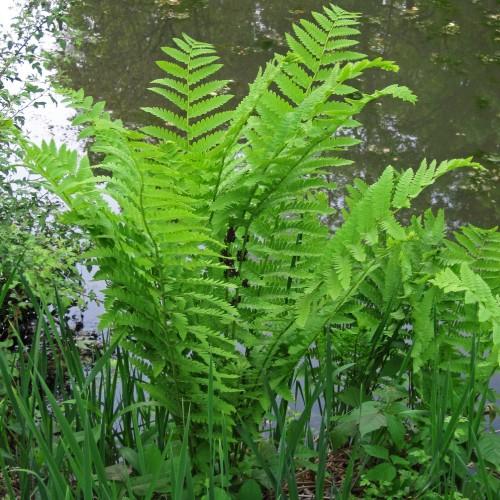
interrupted fern
Osmunda claytoniana
Cycle:
Perennial
Watering:
Frequent
Hardiness Zone:
3 - 8
Flowers:
Flowers
Sun:
Part shade,full shade
Soil:
Sandy Loamy Humus
Leaf:
Yes
Growth Rate:
Low
Maintenance:
Low
Care Level:
Medium
watering
Interrupted fern (Osmunda claytoniana) prefers moist but not wet conditions. It should be watered thoroughly about once every 1 to 2 weeks during warmer months (May through September). The soil should be allowed to dry out between waterings. During the colder months (October through April), reduce watering to every 3 to 4 weeks, allowing the soil to dry out completely between waterings. It is also important to mist the leaves of this fern regularly to keep them hydrated.
sunlight
Interrupted fern (Osmunda claytoniana) is a species of hardy perennial fern native to parts of North America. It prefers moist, acidic soil conditions, and part shade to full shade. The fern thrives in areas with filtered sunlight, such as dappled shade and lightly shaded areas, and receives the most optimal, healthy growth when it receives at least 3 to 4 hours of sunlight each day. During midday, it may be best to provide partial shade for the interrupted fern, as too much direct sunlight can be harmful and potentially cause scorching or burning of the fronds. During its growth stages, it should receive light shade with periods of bright sunlight for optimal health.
pruning
Interrupted fern (Osmunda claytoniana) is a slow-growing, shade-loving, hardy species that is native to the eastern U.S. and Canada. It is usually grown as a specimen plant or in a grouping of multiple plants. To keep your interrupted fern looking its best, prune your plants annually. This should be done in late winter or early spring before the plants start to put on new growth. When pruning, only remove large, brown fronds that appear to be dead. Remove them at an angle just above the soil level, but be careful not to remove any healthy leaves. Pruning these dead fronds will help to improve the appearance of the plant and will also encourage new growth. During the summer months, you may also need to remove any fronds that are affected by disease or damage. By pruning your interrupted fern annually, you can help to encourage full, healthy growth and will be rewarded with a beautiful, lush looking plant.
